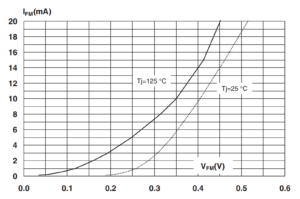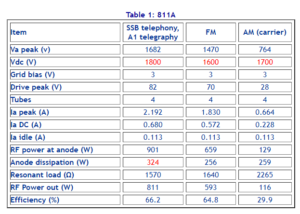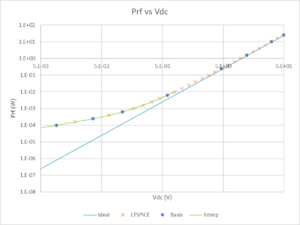Several articles on this site have used diode half wave detectors down to very low signal levels, well below the commonly perceived ‘threshold’ of the diodes, and it has prompted comments to the effect that this cannot work.
Really simple PN junction diode model
An ideal diode is a device that conducts in one direction with zero voltage drop, and does not conduct in the other direction.
Practical diodes typically have an IV characteristic with a knee at some small forward bias from about 0.2V to 0.6V depending on the nature of the PN junction.
An often used simple model of a practical diode is an ideal diode with a series battery of voltage equal to the offset of that knee, the ‘threshold’ if you like.
This model may be quite adequate when the applied voltage is much larger than the knee voltage, eg if you were rectifying 24V AC.
Practical diodes
Shockley’s diode equation
William Shockley modelled the IV characteristic of a diode as \(I_D=I_S(e^{\frac{V_D q}{n k_B T }}-1)\) where ID is the diode current, IS is the reverse-bias saturation current (or scale current), VD is the voltage across the diode, kB is Boltzman’s constant, T is absolute temperature, q is an elementary charge, and n is the ideality factor, also known as the quality factor or emission coefficient.
\(\frac{k_B T }{q}\) is often known as VT.
Shockley’s equation with n=1 is often known as Shockley’s ideal PN diode.
BAT46
Let’s look at the BAT46 Schottky diode, it has PIV=100V and is very suited to a lot of these higher voltage RF signal projects.

Above is the IV characteristic from a datasheet. They are often not very helpful at really low currents as used in some of these applications, but note the great temperature sensitivity. Continue reading Can a diode be used to rectify signals smaller than its ‘threshold’ voltage?
Last update: 25th February, 2023, 6:10 PM









